How to Unsubscribe From Emails on Gmail & Reduce Clutter for Good
Email is an essential communication tool. We use it to send and receive messages, photos, documents, and files. With the rise of e-commerce and online services, our inboxes have become valuable marketing tools, too. Not surprisingly, our inboxes attract a lot of unwanted attention from businesses hoping to advertise their products and services to us. Before long, we end up with dozens, if not hundreds, of emails from companies we don’t recognize. Thankfully, unsubscribing from these emails can be part of your email management strategy. This post explains how to unsubscribe from emails on Gmail to help you achieve a clutter-free, organized inbox with minimal effort.
Another way to simplify the process of unsubscribing from emails is to use Inbox Zapper's Gmail cleanup tool. This tool can help you quickly unsubscribe from unwanted emails on Gmail and achieve your inbox organization goals.
What Are the Key Differences Between Blocking and Unsubscribing?

Your email inbox is like a virtual home — after all, that’s where all your first official points of contact go when you sign up for a new service, apply for jobs, buy stuff online, etc. And just like your physical home, letting my inbox get cluttered can feel chaotic, with most of that mess stemming from marketing or newsletter emails. These unwanted emails can end up in my inbox in all sorts of ways. For example, when I buy something online, I may have inadvertently given the company permission to send me more promotional materials, or a company may have sold my email as part of a list, paving way for me to become spammed by marketers.
That's a trap that most Gmail users have fallen prey to:
- In 2023, around 45.6% of all emails worldwide were identified as spam.
- Over two-thirds (68.8%) of people who had received spam and/or phishing messages reported their mental health being impacted at least a little as a result.
- Most people (96.8%) have received spam messages in some form.
- The topic most commonly seen in spam emails is prizes and giveaways, with 36.7% of people saying this is one of the top themes they see. This was closely followed by emails about job opportunities (36.3%), and banking-related scams came in third at 34.6%.
Google can help you avoid an email avalanche with just a few clicks. With the Gmail unsubscribe feature, I can stop promotional emails from sneaking into my inbox or block unwanted newsletters from bothering me further.
What’s the Difference? Unsubscribing vs. Blocking Emails
Before digging into the details of unsubscribing, I need to know the critical differences between blocking and unsubscribing:
- Blocking an email: Blocking an email, or report spam, means I’m asking Gmail to move all unwanted emails from a specific sender to the Spam Folder. These senders won't know I’ve blocked their emails, so I’ll receive future emails; they’ll automatically be filtered into my Spam Folder.
- Unsubscribing from an email: When I unsubscribe from emails, the senders are notified that I no longer wish to be part of their mailing lists. This mainly applies to unwanted newsletters, daily emails, and the like
Unfortunately, this doesn’t always stop the incoming flux of unwanted emails, and, to make matters worse, not all marketing emails have this option, even though they comply with local and federal regulations.
Unsubscribing vs. Blocking Emails: The Basics
Here are the differences between blocking and unsubscribing:
- Unsubscribing stops only certain emails, like promotional emails, meaning I can still receive more messages from this email sender. some text
- Unsubscribing requires senders to take action and remove me from their mailing list, which is only sometimes effective.
- Unsubscribed messages stop entering my email address entirely, and blocked messages go automatically to my spam folder.
- The sender's email address will only appear in that folder where I can sift through messages.
- Blocking is the go-to option because I ultimately control unwanted emails. Meanwhile, Blocked senders don't know they've been blocked, while unsubscribing means informing the sender of my wishes.
Knowing these fundamental differences, I can decide which works best for me. Both methods will help me organize my inbox effectively and prevent unwanted email clutter.
Related Reading
- How to Unsubscribe from Emails
- How to Block Spam Emails on Gmail
- How to See List of Email Subscriptions on Gmail
How to Unsubscribe from Emails on Gmail
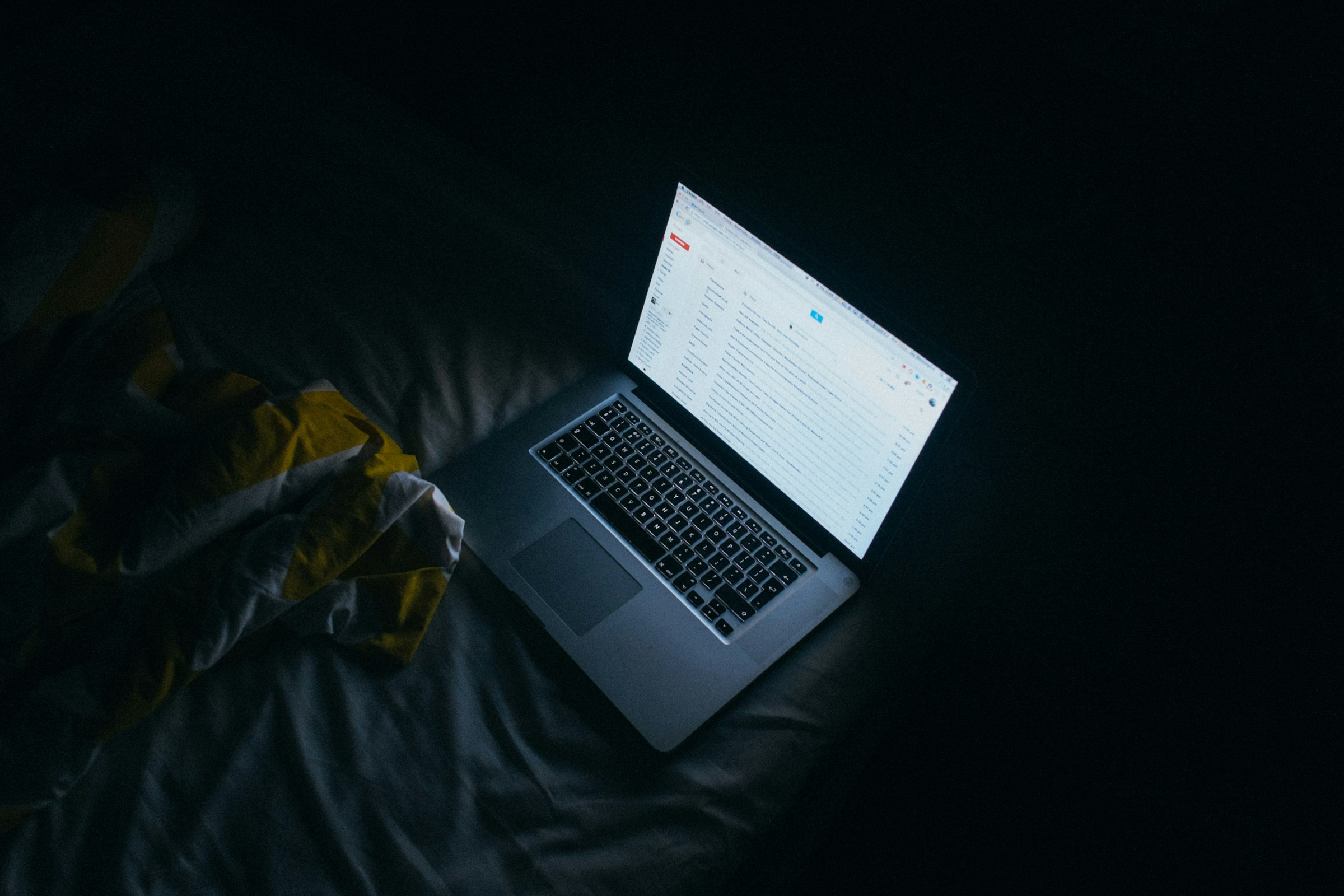
The first step to better email management is taking stock of your subscriptions. Before we get to how to unsubscribe from unwanted emails in Gmail, we’ll first go over how you can see all your existing Gmail subscriptions in one place.
Here is a step-by-step guide on how to find them:
- Log in to your Google account (note that this differs from your Gmail account).
- On the left, click “Payments and Subscriptions.”
- Click “Manage Subscriptions” to see all your current subscriptions.
Use Gmail’s Unsubscribe Feature
If you decide that the Gmail unsubscribe feature is the best option for sorting your emails, here are three ways to make that happen:
1. Use the Gmail Unsubscribe Button
- Head to your account on Gmail.
- Hover over an email sent from the subscriber you want to unsubscribe from.
- You should find an Unsubscribe button beside the sender's name.
- Click on it.
- A pop-up will appear asking you to confirm this decision.
- Click Unsubscribe again to confirm.
The only two downsides to this method are:
- You may not always find the “unsubscribe” button available since the email sender provides it.
- There's no mass “unsubscribe” button or option, meaning it’s possible to still receive certain emails from different domains the sender uses.
Luckily, there are other, more sure-fire ways to unsubscribe from emails from specific individuals or organizations.
2. Use the Gmail Unsubscribe Header
If you regularly read through emails I’ve subscribed to, you've probably noticed a Gmail “unsubscribe” button at the top, next to the sender's name and email. Many senders opt to add this list-unsubscribe header link to their emails, which aids Google in locating this link and displays the “unsubscribe” button at the top of the email.
Much like the previous method, once you click “Unsubscribe,” a dialogue box will appear, and you can click “unsubscribe” once more to confirm your decision.
3. Use the Unsubscribe Link
If the previous methods don't work, most subscription emails will include an “unsubscribe” link at the bottom, which you can click on to unsubscribe easily. The link will most likely direct you to the sender's website, where you'll find the relevant steps to opt out of this subscription. Is this a guaranteed way to stop receiving emails from that sender?
Yes! The 2003 CAN-SPAM Act ensures that marketing emails and promotions incorporate an “unsubscribe” link or button. If not next to the header or displayed at the top by Google, it'll be somewhere in the body of the email. Unfortunately, some senders might complicate this process, forcing subscribers to log in to their website user profiles and give a reason for unsubscribing. Most bulk email senders comply with this process to avoid fines and fees and respect your decision to unsubscribe.
Unsubscribe From Emails in Gmail From Your Desktop
The previous methods should help you quickly detect a Gmail “unsubscribe” link or button if you're a Windows user and are using the Gmail app. But if you’re an Apple iOS user and can’t find the “unsubscribe” feature.
Here's how to do so:
- Open your Mail app and click on any message I've received in my inbox.
- A banner underneath the header will specify if this message is from a mailing list.
- Next to the banner, there is an “unsubscribe” button. Click on it to unsubscribe easily.
Fortunately, the Mail app automatically detects if an email is promotional and displays the unsubscribe button for you; you don't have to search for an unsubscribe link yourself.
Unsubscribe From Emails in Gmail on Your Mobile Devices
Some users don't use Gmail on a desktop and will opt to use their mobile devices instead. That’s no problem; you'll still have the option to unsubscribe from any smart device.
The steps are just a little bit different:
- Head to your Gmail app.
- Decide which promotions or marketing emails to unsubscribe from. Remember that my inbox might have been broken down into different categories, so I'll likely find any unwanted messages in the Promotions folder.
- Once I open the email, I'll find the three-dot symbol at the top right corner. Tap on it to open the menu.
- From the listed options, tap Unsubscribe.
- A dialogue box asking me to confirm this process will pop up. Tap Unsubscribe again.
Related Reading
- How to Manage Email Subscriptions on Gmail
- Best Email Cleaner
- Auto Unsubscribe Gmail
- App to Unsubscribe from Emails
Can I Mass Unsubscribe From Gmail Emails?

Unfortunately, Gmail’s unsubscribe feature doesn’t allow users to leave multiple email lists simultaneously – you have to unsubscribe from each list individually. Many Gmail unsubscribe tools and apps make the bulk unsubscribe process easier.
12 Tools to Help You Manage Mass Unsubscribing Emails on Gmail
Many third-party applications offer the ability to unsubscribe from Gmail in bulk. Here are the top tools and apps for unsubscribing from Gmail emails.
1. Inbox Zapper

Inbox Zapper is the Gmail cleanup tool that works. With one click, It allows you to mass unsubscribe from emails and newsletters and mass delete emails. It scans your inbox for email lists and unwanted emails. None of your email data ever leaves your device, preserving complete privacy.
Inbox Zapper key features:
- From day one, it was designed with privacy in mind.
- Other tools resell your data; we just help you clean your inbox.
Join 15,687 people who have used Inbox Zapper to clean 28,384,924 emails. For now, Inbox Zero only supports Gmail, but we will expand to other email services soon. Inbox Zapper is the easiest way to clean your Gmail inbox.
Try Inbox Zapper's Gmail cleanup tool for free today to clean up your Gmail inbox with one click.
2. Unroll.me
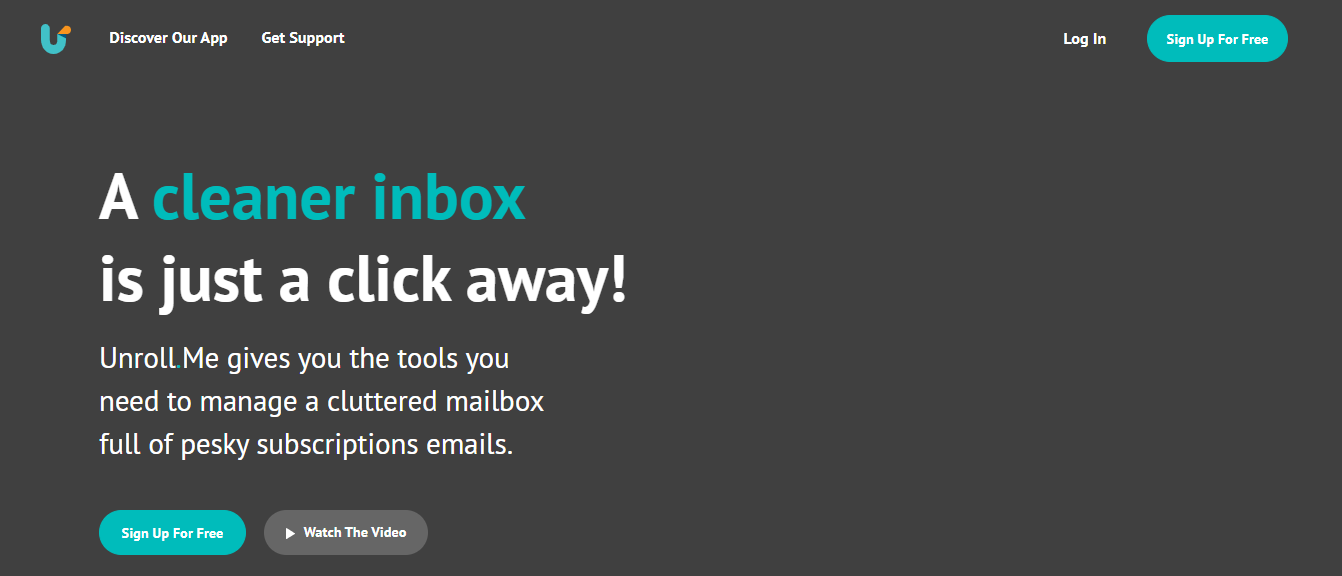
Unroll.me is an app that allows you to bulk unsubscribe from Gmail emails, among other features. The app’s “Rollup” feature condenses emails from frequent senders into a separate file, so it does not clutter your inbox. This feature is perfect for people who still want to retain the ability to read emails when needed but don’t want frequent emails clogging up their inboxes.
3. Cleanfox

Cleanfox is another free app that will scan your inbox to help you identify emails from which to unsubscribe. This app prides itself on assisting people to lower their carbon footprint by preventing unwanted emails from being sent to their inboxes.
4. Instaclean

Instaclean is another bulk unsubscribe Gmail app highlighting how cleaning your inbox and unsubscribing from emails is eco-friendly. Instaclean sorts all your newsletters and emails from your inbox based on usage rate to identify which ones you want to unsubscribe from. With this app, you can even receive “coins” to plant a sapling to give back to the environment.
5. Edison Email
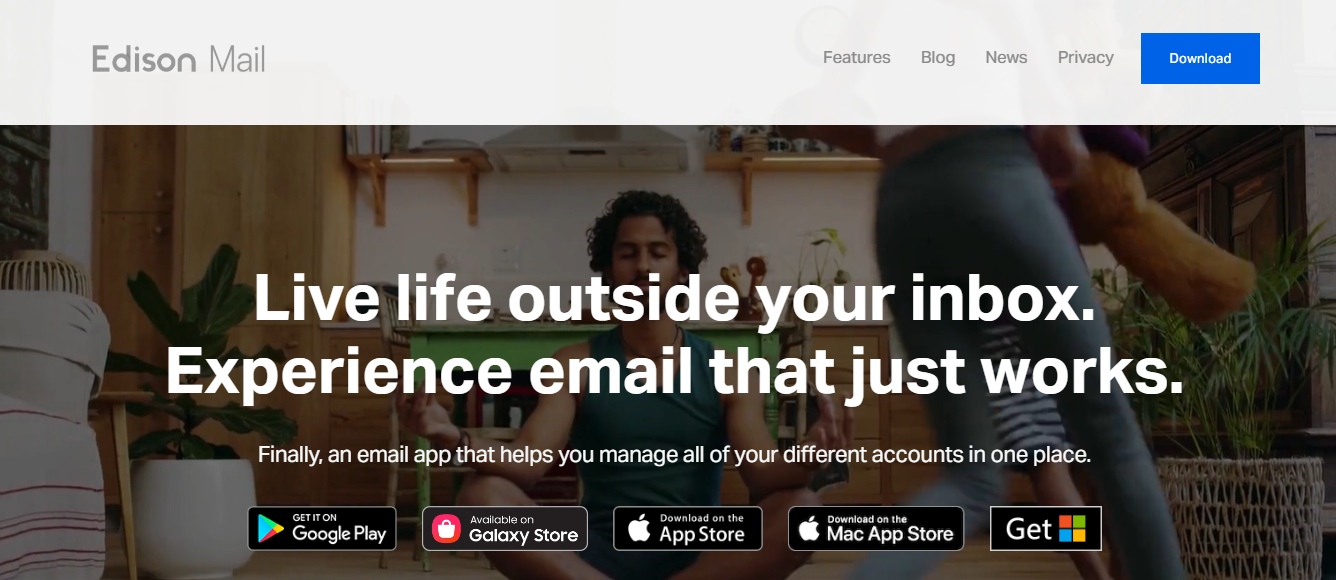
Edison’s app, simply called Email on the Google Play Store, consolidates email inboxes from different providers. The app also offers bulk unsubscribe features and subscription management tools, plus it blocks email tracking pixels for those concerned with privacy.
6. Clean Email

Clean email is an app that is also highly focused on privacy, keeping the data of its users as safe as possible. The app sifts through your inbox, identifying emails to unsubscribe from so you can prioritize the important ones. You can also set up certain emails to be instantly marked as read and auto-archived for future reference or get a daily summary to see what you’ve skipped.
7. InboxPurge
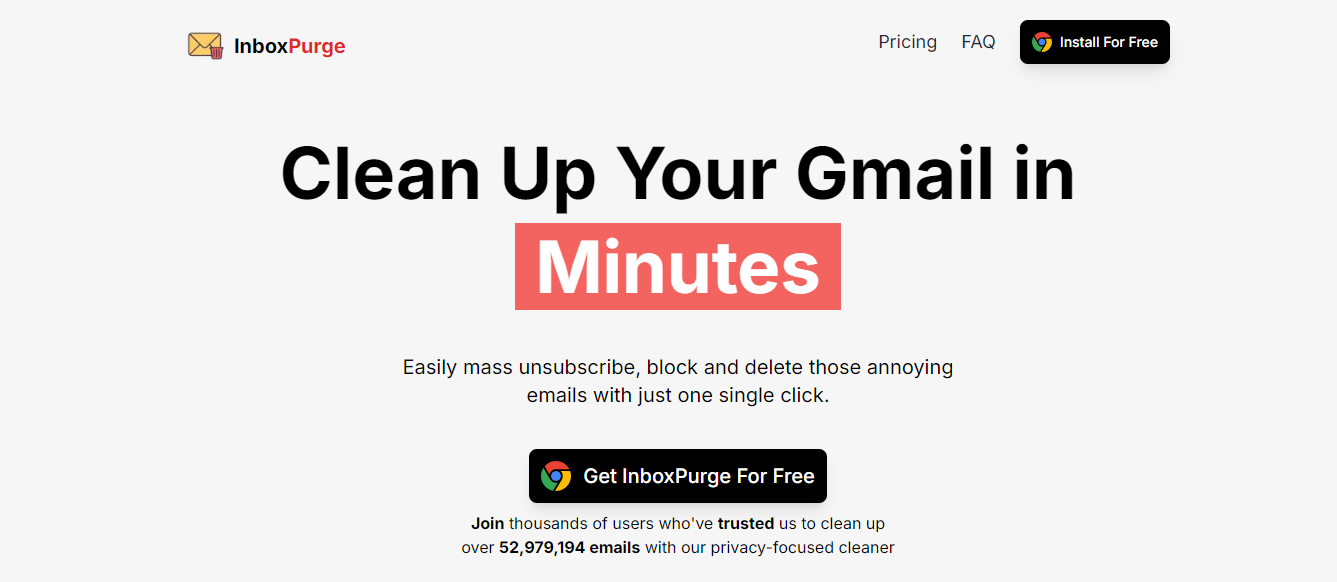
InboxPurge is a powerful Gmail extension that allows you to unsubscribe from newsletters, bulk delete unwanted emails, and manage your email subscriptions. What sets InboxPurge apart is its privacy-focused approach your data never leaves your device, making it ideal for users concerned about security.
8. Mailstrom
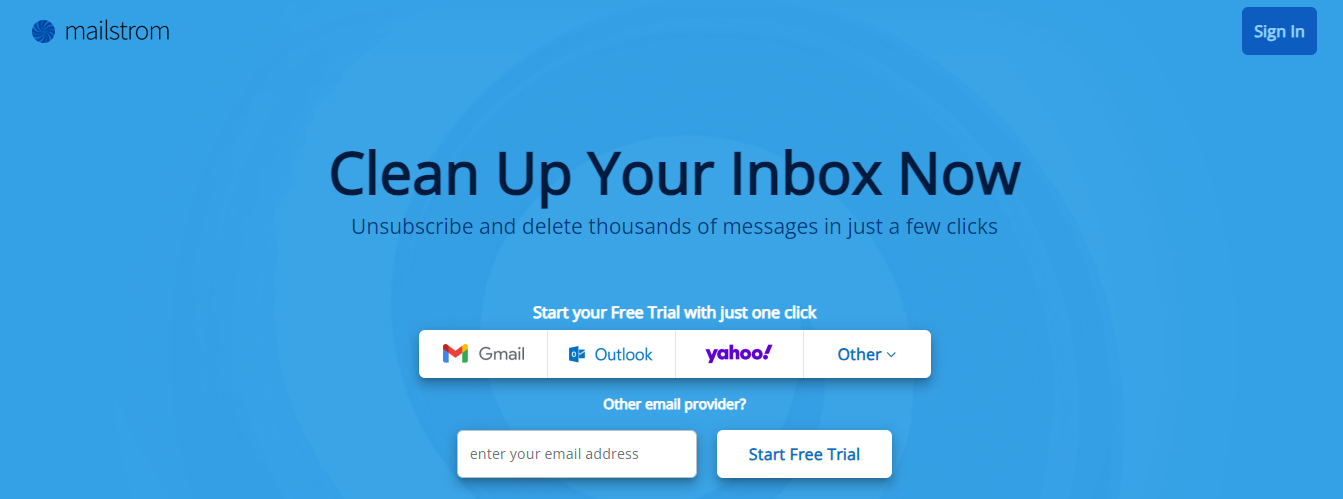
Mailstrom excels in handling email overload by allowing users to unsubscribe from mailing lists, archive messages, or delete large quantities of emails in one go. It’s ideal for users managing multiple email accounts.
9. SaneBox
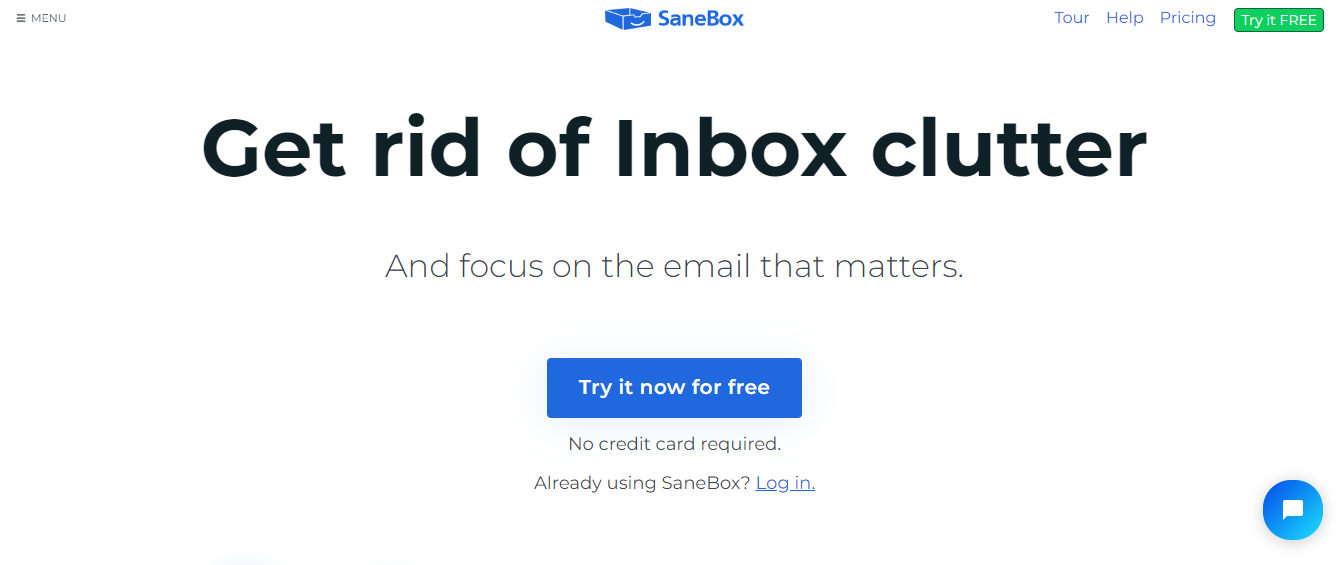
SaneBox uses AI to help prioritize emails. It automatically sorts less essential emails into designated folders and offers features like snooze and reminders to make inbox management easier.
10. AgainstData

AgainstData is a tool that helps you unsubscribe from emails with one click, without any hassle. It also allows you to delete unwanted emails, helping to reduce the CO2 emissions generated by emails in your inbox. Another great feature is that it shows all the companies storing your data and lets you request the deletion of your data from those companies.
11. Triage

Triage is unique in the way it allows you to clean your inbox. It stacks up your unread emails as a pile of cards. Swiping left archives the email, swiping right keeps it, and tapping on it expands it. It helps you stick to the concept of inbox zero. One downside is that their app is only available on iOS.
12. Trimbox.io
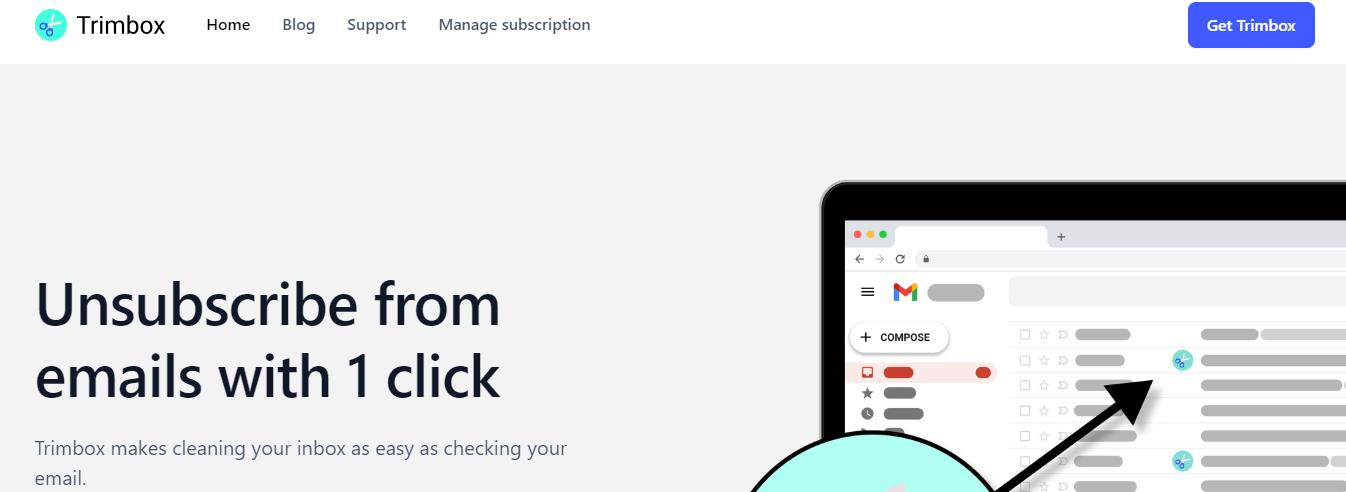
Trimbox scans your inbox for email lists and unwanted emails and lets you unsubscribe with just one click.
Clean Up Your Inbox With One-Click with Inbox Zapper's Gmail Cleanup Tool for Free Today
Inbox Zapper is a Gmail cleanup tool that helps users eliminate unwanted emails. With Inbox Zapper, you can mass unsubscribe from:
- Email lists
- Delete unwanted emails
- Scan your inbox for email lists and unwanted emails.
The best part about Inbox Zapper is that the tool works with one click—you can clean your inbox with one click!
Related Reading